How King made ‘beloved daughter-in-law’ his centre of attention: Charles and Kate Middleton engaged in ‘animated conversation and laughter’ as they supported one another side-by-side at Trooping the Colour, body language expert says
The close relationship between King Charles and his daughter-in-law Kate Middleton appears to have become even closer, according to a body language expert.
Charles, 75, and Kate, 42, were today reunited on the Buckingham Palace balcony for the first time since they both started cancer treatment.
The Princess of Wales watched a spectacular RAF flypast with other members of the Royal Family as she made a triumphant return to public life at Trooping the Colour.
According to Judi James, the two royals exhibited behavior during their balcony appearance that was consistent with “a series of ‘reward rituals that spoke volumes about family bonds and relationships behind the scenes.’
The King and Princess of Wales have long been thought to have a close bond, partly due to their shared interests in the arts.
According to body language expert Judi James, Kate leaning towards Charles showed her confidence and ‘put her in a supporting role’ with the king.
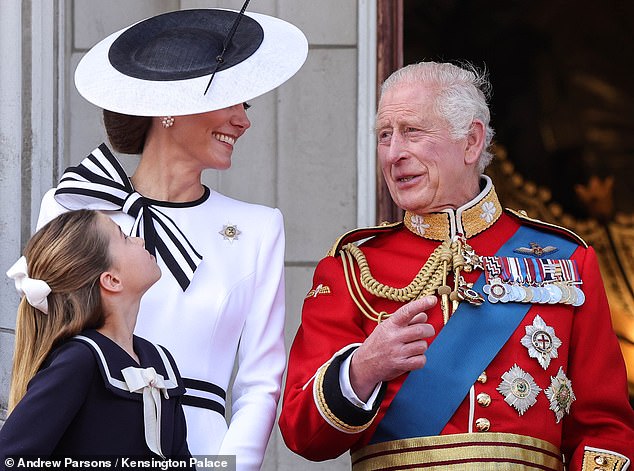
The body language expert also noted that the two royals enjoyed ‘animated conversations with eye contact and laughter’
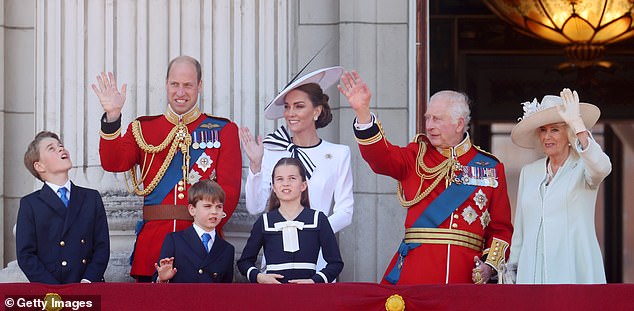
King Charles made the Princess of Wales “the center of attention” by standing next to her, said Judi James, who explained that this showed “how much she is cherished and how grateful he was for her presence today” (photo LR: Prince George; Prince Louis;
But many royal watchers say that after both were diagnosed with cancer, Charles and Kate have grown a deeper bond.
Judi told FEMAIL: ‘Charles has always had an increasingly special relationship with Kate, who he has come to trust and enjoy.
“Here, however, that relationship was emphasized to illustrate how those bonds have only been deepened and enriched by the bonds of empathy created by their illnesses.”
Unlike last year, when King Charles stood next to his heir Prince William, 41, this year he stood next to Kate.
According to Judi, this was significant, as she explained: “Charles made Kate his center of attention to indicate how much she is cherished and how grateful he was for her presence today.”
And it wasn’t just where they stood that stood out: the way the two royals interacted spoke volumes about the relationship, according to Judi.
“Kate was placed next to her father-in-law and the pair had some animated conversations, including eye contact and laughter,” she said.
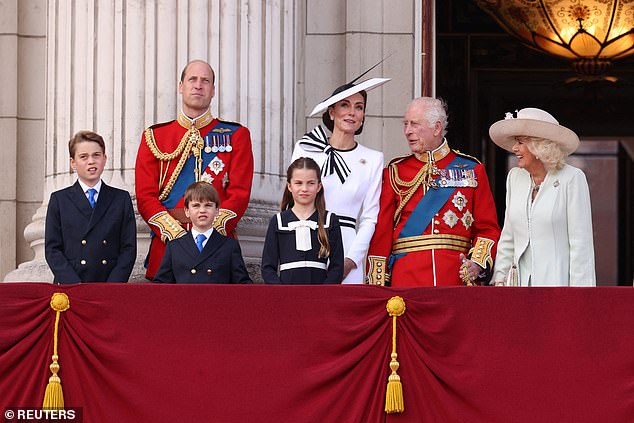
Members of the Royal Family watch the flypast from the balcony of Buckingham Palace today
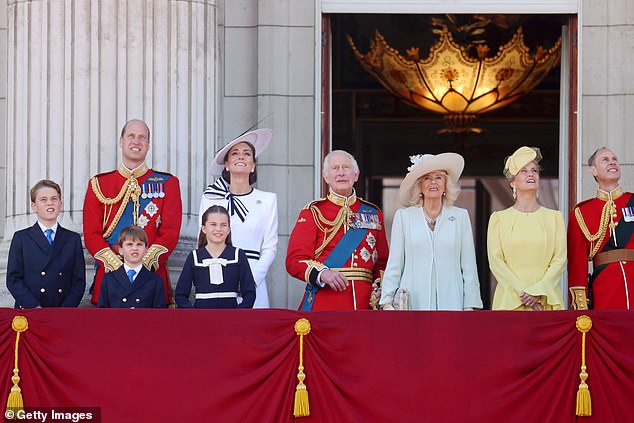
Members of the Royal Family watch the flypast from the balcony of Buckingham Palace today
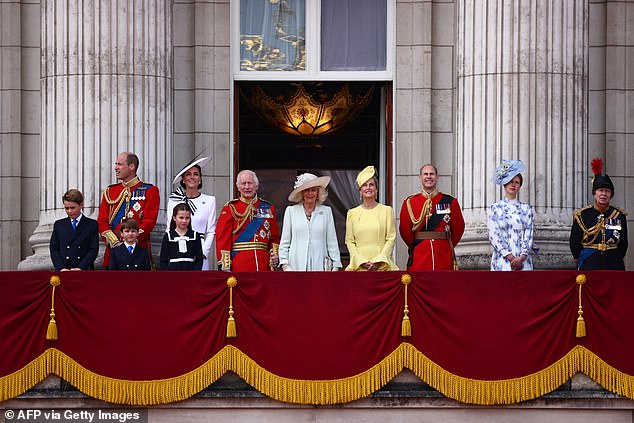
(From left) Prince George, Prince William, Prince Louis, Kate, Princess Charlotte, King Charles III, Queen Camilla, Sophie, Prince Edward, Lady Louise Windsor and Princess Anne today
‘At one point Camilla even wanted to talk to her husband, but his head was turned towards Kate for their conversation.’
These interactions also showed Kate’s confidence, Judi said, describing it as “telling” that “Kate lent to spark their first conversation.” And the context of the royal protocol made this step more important.
As Judi explained: ‘The pecking orders on the balcony can be quite strict, but Kate initiating the conversation not only showed confidence, but it also seemed to place her in a supporting role to Charles.’
While talking, the pair were both seen smiling and laughing. Judi noted that “Charles seemed to appreciate the manner [Kate] made him laugh too’.
The huge crowd that had gathered today to catch a glimpse of the royals erupted when Kate stepped onto the balcony.
And they continued to show their support during the national anthem. According to Judi: ‘Towards the end of the anthem, [the king] looked tearfully at the support he and his daughter-in-law received.’
The royal family gathered to watch the RAF’s spectacular flypast, which was greeted with cheers from the crowd below.
It started when senior royals entered the balcony – with Charles and Camilla followed by Kate and William and their children George, Charlotte and Louis.
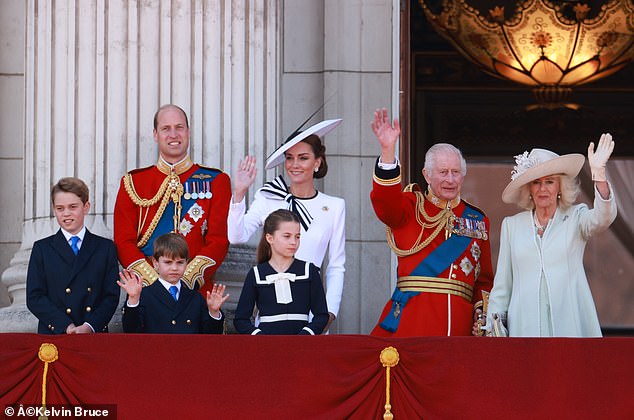
William and Kate with their children next to Charles and Camilla at Buckingham Palace today
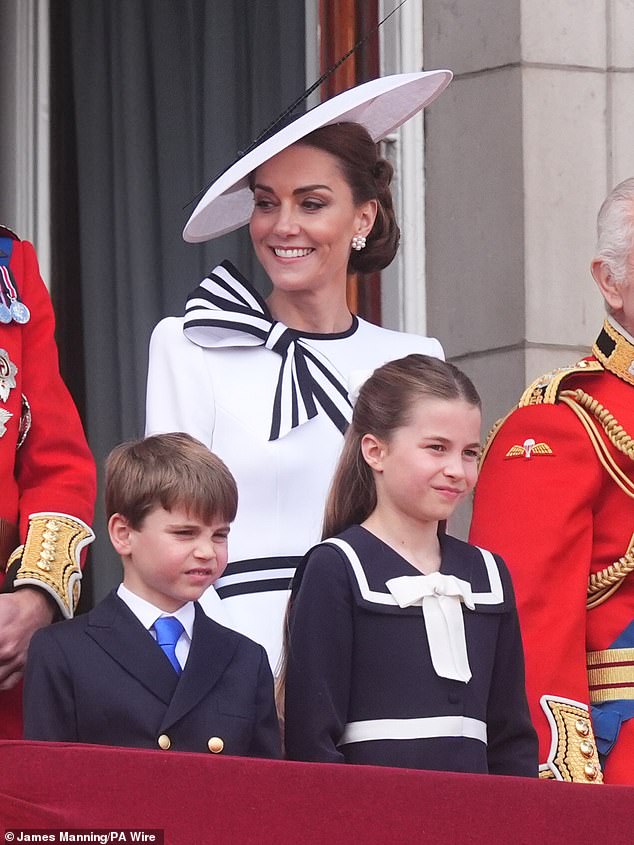
Prince Louis, the Princess of Wales and Charlotte on the balcony of Buckingham Palace today
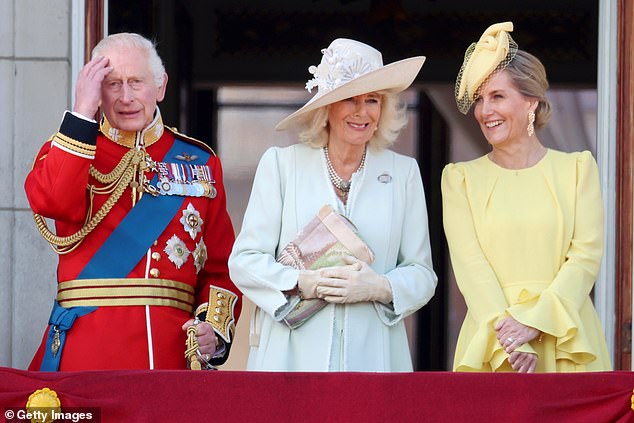
King Charles, Queen Camilla and Sophie, Duchess of Edinburgh, at Buckingham Palace today
They were joined by the Duke and Duchess of Edinburgh as the family smiled and waved to the crowd before standing proudly as the national anthem was played.
Kate’s performance was in doubt after she missed the final Trooping rehearsal last weekend, with confirmation that she would be attending was only given at 6pm yesterday.
But because the king also suffered from cancer, the current spectacle of military splendor became, after much uncertainty, a symbolic statement of the monarchy.
Scotland Yard carried out a ‘substantial’ police operation, with anti-monarchy group Republic allowed to protest but not using amplified sound.
Hundreds of Metropolitan Police officers were deployed to the ceremonial route to ensure the safety of spectators, with tens of thousands in attendance.
Earlier, the 42-year-old Princess of Wales beamed and waved as she and her three children, Prince George, Princess Charlotte and Prince Louis, were cheered by the crowd on The Mall in a carriage procession for the Trooping the Color ceremony.
Kate was surrounded by other members of the family – with her husband Prince William, Colonel of the Welsh Guards, on horseback, along with Princess Anne, Colonel of the Blues and Royals, and Prince Edward, Colonel of the Scots Guards.
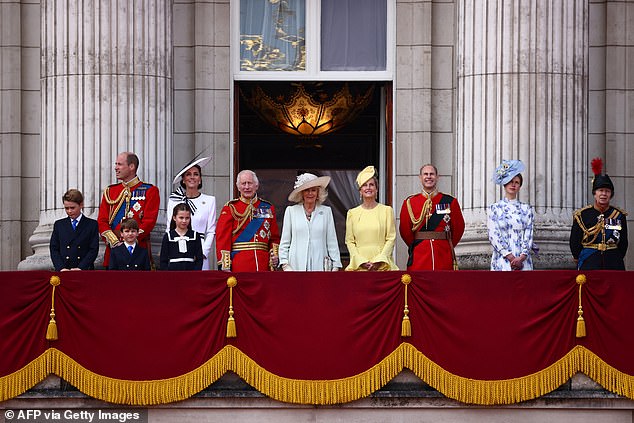
(From left) Prince George, Prince William, Prince Louis, Kate, Princess Charlotte, King Charles III, Queen Camilla, Sophie, Prince Edward, Lady Louise Windsor and Princess Anne today

King Charles III and Queen Camilla today during Trooping the Color at Buckingham Palace
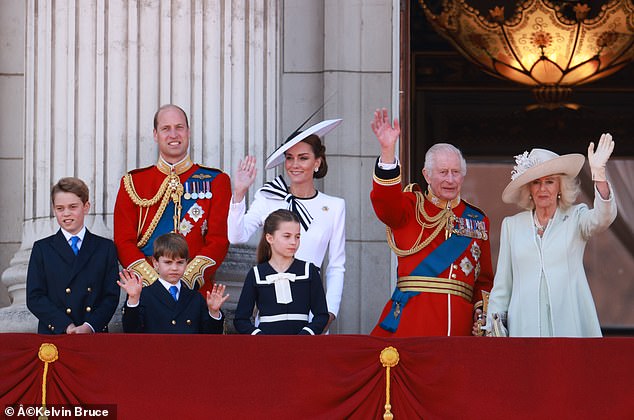
William and Kate with their children next to Charles and Camilla at Buckingham Palace today
After spending much of a year coming to terms with the diagnosis and undergoing ongoing chemotherapy, Kate looked relaxed as she traveled with her family in the glass state carriage along one of London’s most famous thoroughfares.
The family were first seen arriving at Buckingham Palace in a car at 10am, with George sitting between Kate and William, and Charlotte and Louis opposite.
King Charles III also rode in a carriage with Queen Camilla, a departure from last year due to his illness, and he inspected the officers and guardsmen on the Horse Guards Parade in Whitehall from the carriage rather than from a horse.
Trooping the Color is both a social and ceremonial occasion and the stands overlooking the parade ground were filled with approximately 8,000 spouses, girlfriends and parents of the guardsmen and officers in the parade.
More than 1,250 soldiers were present, and hundreds of Guardsmen lined the parade ground, awaiting inspection by the King from his carriage with Camilla, Colonel of the Grenadier Guards, and accompanied by the mounted royal colonels.
The colour, or regimental flag, deployed was the royal color of Company Number 9, Irish Guards.
When the royal carriages finally came to a stop, Louis left first, followed by his older brother George and sister Charlotte.
Finally, Kate stepped down in a Jenny Packham dress, a Philip Treacy hat and the Irish Guards Regimental Brooch, as she is the Colonel of the regiment.
As the inspection of the Guardsmen in their scarlet tunics and bearskins began, the king glanced at the soldiers fighting soldiers while performing no ceremonial duties.
Next to him in the carriage sat the Queen, wearing a light green silk crepe dress and coat by Anna Valentine, a hat by Philip Tracey and her military brooch from the Grenadier Guards.
During the spectacle, the color was first led through the ranks of soldiers before the guards marched past the king, first slowly and then quickly, with the king acknowledging the command ‘eyes right’ with a salute.
For the first time in more than 100 years, soldiers in the parade were allowed to wear a beard.
The rule change, which applies across the military, was approved by the king earlier this year after facial hair was only allowed for religious, medical or job-specific reasons.
